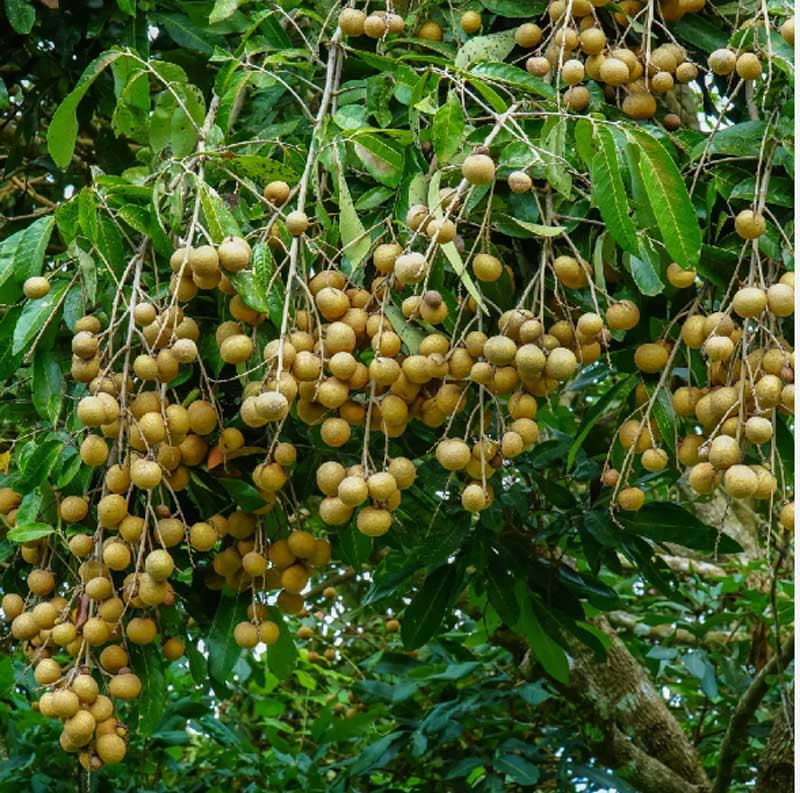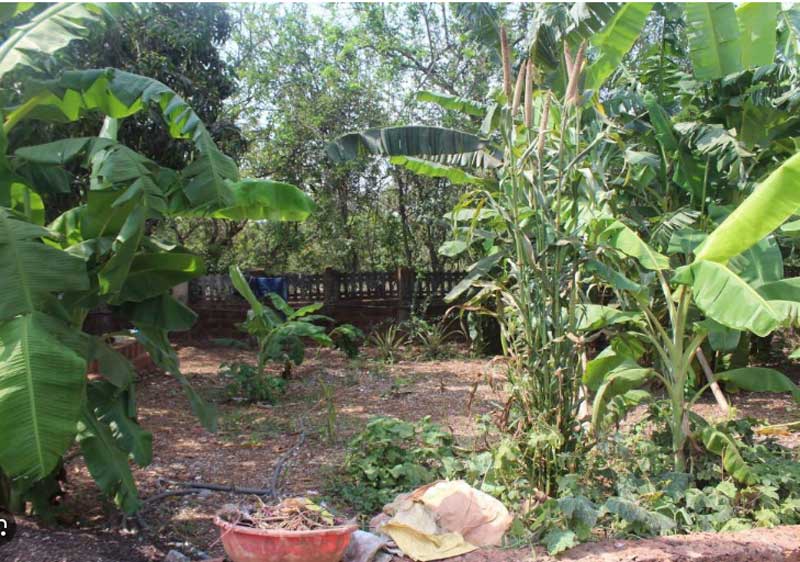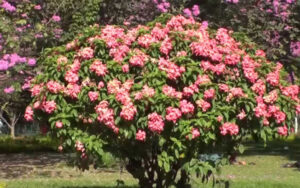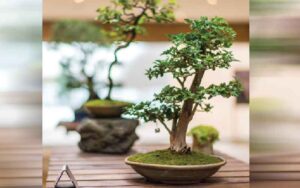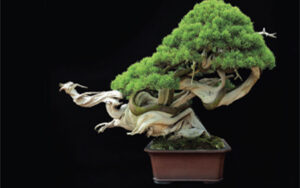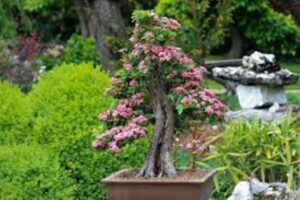Snowbush: A Soft Pink Fantasy of a Shrub with an Airy, Delicate Look
Dr. A.V.D. Dorajee Rao
Professor (Hort.)
Dept. of Floriculture and Landscape Architecture,
Dr. Y.S.R. Horticultural University
M. Lakshmi Kamala
Ph.D. Scholar (Dept. of FLA)
Dr. Y.S.R. Horticultural University
Snow bush is a common name of Phyllanthus nivosus, also referred to as Breynia disticha. It is a member of the Euphorbiaceae family. This perennial shrub is indigenous to the Pacific Islands, Tropical Australia, and Tropical Asia. It’s also referred to as Hawaiian leaf flower, Foliage flower, dwarf snowflake bonsai.
B. disticha is widely cultivated as an ornamental in gardens and for hedges in tropical and subtropical areas. It is not suitable for temperate areas, where it needs to be placed indoors during the winter. The plant has distinctive brown or pink-coloured branches and is 1.5 to 2.0 metres tall, bushy, and slender.
Its main utility is as a foliage plant despite that it bears few attractive flowers. Leaves are alternate with oblong or ovate leaflets which are variegated in the shades of red, pink, white and green. It blooms on a long pedicel from the leaf axil with tiny yellow-green flowers which generally goes unnoticed.
This lovely foliage plant is becoming more and more popular as a home plant for many
excellent reasons:
Red zigzag stems
Variegated foliage
Elliptic to ovate green leaves mottled with white
Delicately branched slender branches
- Due to its flexible branches and colour changing foliage it can be employed in landscape gardening. It can be used as:
A hedge
A shrub border
An accent and specimen plant
A bonsai plant
A container plant for indoors
A wall drape
“Snowbush can be pruned to form a small tree or hedge. If it is not pruned, it takes the shape of a vase”
Varieties like “Compacta’ and ‘Roseopicta’ are found in this species. The much-admired cultivar, Roseopicta has pink-tinged foliage, while compacta is dwarf, slow growing with smaller leaves and are mostly in white variegation. - Propagation:
- There are multiple methods of propagating snow bush, which includes: root division, stem cuttings, springtime sucker division and seed.

- To propagate snow bush from stem cuttings:
1. Take soft-wood stem cuttings in the summer
2. Place the cuttings in moist potting soil
3. Cover the plant pot with a plastic bag to retain humidity
4. Use bottom heat to promote rooting
Care and Maintenance - Light: Place indoor plants in bright indirect light. It colours best when grown in full sun. While the white species grows well in sun, the foliage will be more white-flushed if it is planted in the shade.
- Humidity: In order to prevent leaf drop, try to keep the area surrounding the plant at least 50% relative humidity all year long.
- Temperature: Snow bush plants thrive at temperatures between 18°C and 23°C (65°F and 75°F), while they can withstand as low as 16°C (60°F) for optimal results.
Soil: Use good quality, permeable, well-drained soil - Water: Water thoroughly and often to maintain moist soil. Do not allow the soil to dry out at any time. Avoid overwatering.
- Fertilizer: Feed every two to three weeks in the spring and summer with a half-diluted, balanced water-soluble fertiliser and once a month with a balanced liquid fertiliser.
Pruning: If left unpruned, snow bush grows rapidly, become fairly huge, and naturally take on the appearance of an appealing vase. Every winter, prune the bush to maintain the desired size. 
- Other tips include:
Give the indoor plants a quarter-turn every week or so to expose all sides to sunlight for even growth.  Keep the plant and the soil warm and the humidity over 50% throughout the year to avoid leaf drop
Keep the plant and the soil warm and the humidity over 50% throughout the year to avoid leaf drop
Using organic mulch around the root zone to preserve moisture
Pinching out stem tips when young to promote branching and new growth
Watering sparingly in winter
It requires repotting every couple of years due to its rapid growth. When it outgrows its present pot, move it up to one size larger in the spring.
Pests and Diseases
Snow bush (Breynia disticha) is resistant to most major illnesses. On the other hand, pests like mealybugs, spider mites, aphids, whiteflies, scale insects, cater pillars and vine weevils can cause issues for it.
Scale insects are particularly difficult to see. They resemble small bumps which can look like they’re a part of the plant. You can brush them off with warm, soapy water.
Mealybugs damage plants by sucking plant sap. They appear as white cottony masses on leaf surfaces, in leaf axils and sheaths.
Vine weevil beetles eat leaves, causing unsightly notching. Their offspring are voracious grubs that hatch in pots and containers, feeding on plant roots.
You can combat these pests under indoor conditions by using Insecticidal soap, hand picking caterpillars, Brushing off pests with warm, soapy water.





